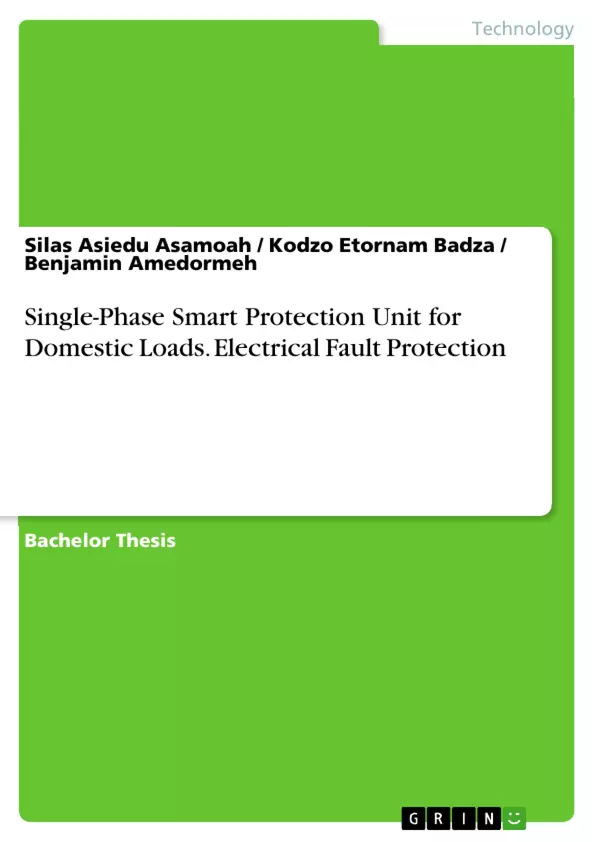In Domestic Electrical Power Systems, protection schemes are essential for the protection of equipment and lives, as well as for providing a reliable and continuous supply of energy. In this thesis, a single-phase fault protection unit for domestic loads is proposed. This proposed scheme uses intelligent components, mainly: a microcontroller, Global System for Mobile Communication (GSM), relay, current transformer, and circuit breaker to implement a smart electrical fault protection system.
The design is simulated and analyzed with the Proteus Design Suit Software, and a prototype is designed and tested. The successful implementation of the smart protection system prevents damage to domestic appliances.
Inhaltsverzeichnis (Table of Contents)
- CHAPTER I
- INTRODUCTION
- Background
- Problem Statements
- Objectives of Study
- Scope of work
- Thesis Organization
- CHAPTER II
- LITERATURE REVIEW
- Details of Relevant Theory
- Review of Past Work on Fault Detection Methods
- CHAPTER III
- SYSTEM DESIGN
- Circuit Description
- Principle of Operation
- Selection of Components
- System control algorithm and Simulation
- CHAPTER IV
- RESULT AND DISCUSSION
- Simulation, Construction and Testing
- CHAPTER V
- CONCLUSION AND RECOMMENDATION
- Summary of Main Study
- Directions for Future Research
- REFERENCES
- APPENDIX
Zielsetzung und Themenschwerpunkte (Objectives and Key Themes)
This thesis aims to develop a single-phase smart protection unit for domestic loads, addressing the challenges of conventional protection systems in residential settings. The unit is designed to detect faults and provide protection, incorporating advanced features for enhanced safety and reliability.
- Fault Detection and Protection
- Smart System Design
- Integration of Advanced Components
- Enhanced Safety and Reliability
- Cost-Effectiveness and Practical Implementation
Zusammenfassung der Kapitel (Chapter Summaries)
- Chapter I: Introduction
This chapter establishes the context and purpose of the thesis. It discusses the background of conventional protection systems and the challenges they present. The chapter outlines the problem statements, objectives, scope, and organization of the study.
- Chapter II: Literature Review
This chapter delves into existing research on fault detection methods, providing a theoretical foundation for the project. It examines different techniques and technologies employed in previous studies and discusses their advantages and limitations.
- Chapter III: System Design
This chapter outlines the design of the single-phase smart protection unit. It details the circuit description, principle of operation, selection of components, and the system control algorithm. The chapter includes simulations to demonstrate the functionalities of the system.
- Chapter IV: Result and Discussion
This chapter presents the results of the simulation, construction, and testing of the protection unit. It analyzes the performance of the system and discusses the findings, highlighting its effectiveness and limitations.
Schlüsselwörter (Keywords)
The primary keywords and focus topics of this thesis include single-phase protection unit, fault detection, domestic loads, smart system design, circuit simulation, microcontroller-based system, relay protection, and safety enhancement.
- Quote paper
- Silas Asiedu Asamoah (Author), Kodzo Etornam Badza (Author), Benjamin Amedormeh (Author), 2019, Single-Phase Smart Protection Unit for Domestic Loads. Electrical Fault Protection, Munich, GRIN Verlag, https://www.grin.com/document/1300294



